黄亚生:中美关系利益攸关,不能任由政治家处理
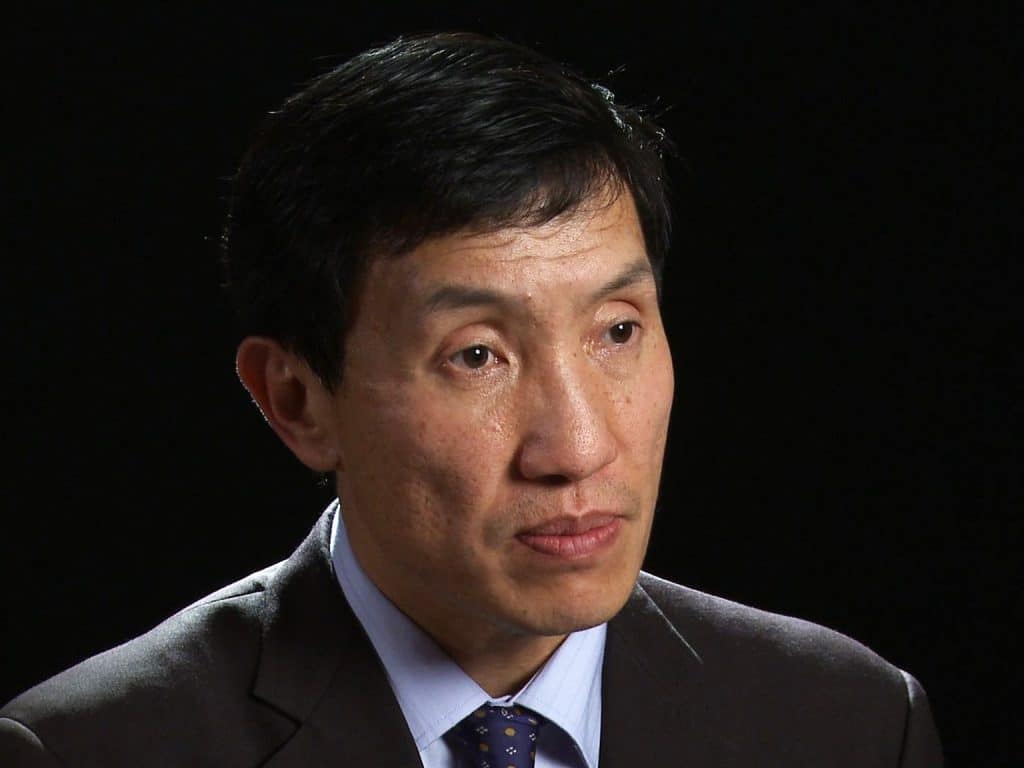
【编者按:本文英语原文发表在Nature杂志上。黄亚生教授授权卡特中心中美印象(US-China Perception Monitor)转发。文末可以查看英文原文。】
2024年8月底,如果不续签《中美科学技术合作协议》(STA),届时该协议将会失效。自1979年两国建交以来,这一历史性协议一直支持着两国的联合研究,每五年续签一次。然而,随着选举年的临近,以及美国政治中普遍存在的对中国敌意的两党共识,STA这次能否续签尚不清楚。
今年2月,在由斯坦福大学的物理学家史蒂文·基弗尔森(Steven Kivelson)和彼得·迈克尔森(Peter Michelson)发起的公开信运动之后,STA被延长了六个月。公开信呼吁美国总统拜登续签该协议,超过1000名研究人员,包括诺贝尔奖得主,签署了这封信。他们认为,STA是支撑开放性的基础研究的框架,这种研究对美国和世界都有益。
基础性研究是科学研究的基石。在美国,基础性研究受1985年冷战期间里根总统政府颁布的“国家安全决策指令189”(NSDD-189)的保护,该指令于2001年9月11日恐怖袭击后由布什总统续签。NSDD-189指出基础研究的成果应尽可能不受限制,以促进科学研究成果的开放和自由交流。该指令旨在支持美国在科学技术领域的领导地位,并承认基础科学知识的共享很少构成安全威胁。
然而,过去十年来,地缘政治格局发生了巨变,美国政府越来越忽视这一基石性原则。与中国同行进行正常学术交流的美国研究人员被指控为间谍。美国海关和边境保护局的特工仅仅因为研究人员的中国背景和研究领域而对其进行审问。2023年,佛罗里达州颁布了一项法案,限制“关注国家”(主要是中国)的研究生在州立大学学术实验室的聘用。今年1月,美国国会试图重启“中国行动”计划。该计划由美国司法部设立,旨在起诉美国研究和工业界中的中国间谍。事实上,该计划在2018年启动时就存在缺陷,并于2022年被撤销。6月,美国众议院提出了一项法案,禁止国防部向与中国有研究合作的美国大学提供资金。
在我看来,这些政策考虑不周并带有种族定性。遗憾的是,这些政策可能预示着未来这个领域的走向。在实际操作领域,美国和中国科学家之间密切和不受限制的合作时代已经结束。
我认为,科学家现在应考虑不再仅仅停留在争取两个国家在基础研究方面保持开放,而是在某些领域为继续双边合作寻找务实的方法。这需要提出更为务实的观点和一项全面解决国家安全需求的操作计划,保留两国之间富有成效的某些方面。以下是一些供讨论的想法。
科学与政治息息相关
美国与中国未来科学技术合作的三个障碍。
首先,无论对错,美国政府在支持科学研究中总是存在一种反合作的偏见。联邦政府在地缘政治友好时期不会增加对研发(R&D)的资助,而是在敌对时期才会增加。例如,1957年苏联人造卫星的发射推动了美国在冷战期间对科学技术进行大量投资。
美国的学术领袖和学者们(参见go.nature.com/4cpzz53)利用这一历史类比来论证,面对来自中国的地缘政治和经济挑战,应增加联邦政府对研发的投入。但研究人员应认识到,呼吁政府加大支持的同时和要求与中国继续合作存在着固有的矛盾。只有在最尖锐的地缘政治敌意下,联邦政府才会采取行动,而这种尖锐的敌意也会加剧对与中国的合作反对。
第二,政策制定者和公众对科学与技术的区分并不像学术界许多人那样鲜明。毕竟,公众为科学研究买单,并有权期待从投资中获得实实在在的利益并不受其害。基础研究和应用研究之间的区别在公众及其政治家们的心目中是极难区分的。
美中合作的倡导者在这个问题上可能会陷于矛盾之中并存在选择性的做法。他们指出基础研究的内在价值,以及科学合作带来技术进步时对美国经济和社会的实际利益。这两种立场都是有效的,但将它们放在一起也突显了这样的担忧:当一个对手掌握这样的科学时,它会以研究应用的形式构成威胁。一旦你承认通过科学的应用渠道的潜在利益,你就不得不承认通过同一渠道带来的潜在危害。
这并不是对基础研究论点的驳斥,而是承认科学与技术是密切相关的。今年3月,美国国家科学基金会(NSF)发布了一份由精英科学咨询小组JASON撰写的报告,为美国政府提供相关方面的指导。报告承认,“技术准备水平”应该是决定特定研究项目开放程度的一个考虑因素。JASON报告从技术角度提出这一观点,指出由于全球化和互联网等因素,某些领域研究概念转化为应用的速度加快了。我的观点是,逻辑上的一致性要求我们对应用科学的两个方面——中国科学技术进步带来的对美国经济、环境和健康的好处,以及利用这种知识用于军事目的的负面影响——都要坦诚相待。
第三,我们这个时代的地缘政治背景确实很严峻。谨慎而克制的JASON报告指出:“中国最近努力优先将基础研究引向军事需求,以及其限制信息流出国的决定,可能会严重限制与中国研究机构合作的利益。”
一个例子是中国的军民融合(MCF)计划,该计划整合了民用和军事部门的技术。MCF计划于2017年提升为最高级别的政府机构之一,由习近平主席领导,是美国国家安全的最大关注点,并给主张开放与合作的美国科学界带来了令人棘手的困境。
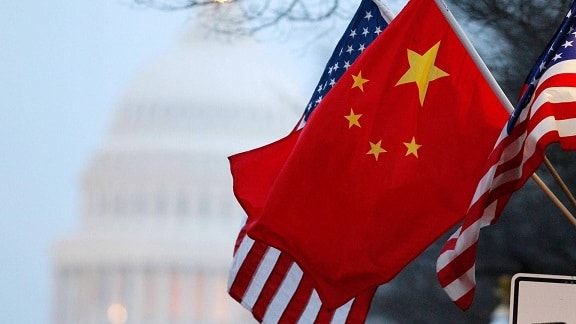
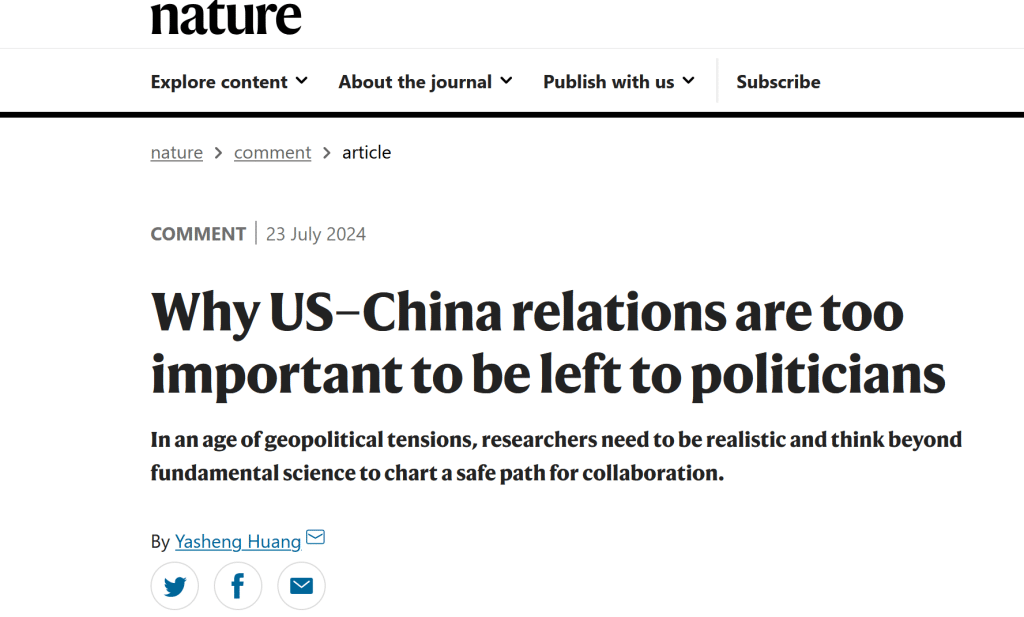
地缘政治时代的合作
JASON报告承认,日益变化的全球环境需要新的研究安全方法,因为先进军事技术越来越多地来自民用部门。报告建议针对个别项目实施风险缓解流程,而不是对被视为敏感的基础研究实施广泛控制。在这个地缘政治时代,如何在开放科学与国家安全利益之间找到正确的平衡是极具挑战性的。以下是四个进一步的考虑因素。
首先,过去十年美国已经向应用研究方向发展,这也是部分推动减少美国大学校园中中国学生数量的原因。从早些年基于竞争而非排斥理念、秉承远见和大胆的方法的《无尽前沿法案》到2022年的《芯片与科学法案》标志着研发优先事项向强调应用研究而非基础研究的转变。
《芯片与科学法案》既广泛又排他,增加了在特定领域的投资,以减少对外国供应链(尤其是中国)的依赖,划出与中国合作的禁区。未来,以保障研究安全为名,可能会有更多研究课题从大学实验室转移到国家实验室,建立更多的合作禁区。国家研究实验室需要安全许可,这是外国研究人员无法克服的障碍。
JASON报告建议资助项目应培训更多美国人开展敏感领域的研究。虽然培养国内人才储备值得赞扬,但在可预见的未来,国内人才渠道不太可能弥补排除中国学生所造成的损失。中国学生在科学、技术、工程和数学(STEM)领域的参与程度很高,中国拥有庞大的科学劳动力。2020年,中国有360万学生毕业于STEM领域,是美国82万学生的四倍多(参见go.nature.com/3w4k3zx)。
此外,科学和技术在人力资本方面的需求越来越高。实现摩尔定律(电子电路中组件数量每两年翻一番)需要的研究人员是20世纪70年代初的18倍。在敏感研究领域重新分配美国人员将使其他领域的研究人员减少。
从这个意义上说,识别和保护敏感研究可以被重新定义为保护甚至扩展包括与中国合作在内的一种呼吁。在限制合作的同时对更多研究领域进行分类是一种自我否定的提议。如果没有外国人才的注入和联盟,美国科学家最终将不得不在研究领域之间进行竞争。国家进步将放缓和收缩。
第二,科学交流的广泛认可风险在于两用技术,这些技术可以应用于民用和军用目的。这类技术受到出口管制。但还有另一种双重性,即跨国利益的发生率。无论癌症药物在哪里发明,它对中国和美国人都是有益的。中国在地球和环境科学方面,特别是在绿色能源和污染控制方面处于领先地位,突显其在这些领域的《自然》指数中领先于美国(见Nature https://doi.org/m8pz; 2023)。因此,如果中国的发明能够帮助美国人民并解决气候变化问题,美国的国家安全就得到了很好的保障。
第三,与中国科学家的合作在推动知识进步方面具有更大的优势,因为中国是科学强国。根据《自然》指数,2022年中国在自然科学领域的研究论文产量首次超过美国(见Nature https://doi.org/k86t; 2023)。中国在物理科学方面尤其强大。《经济学人》杂志从《科学网》收集的数据表明,中国在材料科学、化学和工程方面领先于欧盟和美国(见go.nature.com/3wecdlb)。但从国家安全的角度来看,可以合理地认为,中国的科学实力对美国构成了更大的潜在威胁,尤其是因为物理和工程科学与军事能力密切相关。
对于中国能力的双刃性这一难题,没有简单的答案。美国科学家是否与中国同行合作与否,并不能改变中国在某些领域的领先地位。在最好的情况下,双方的合作可能有助于中国缩小差距。
第四,围绕科学技术的合作可以成为重建两国失去的部分信任的渠道。在冷战期间,科学家们在稳定苏联和美国关系方面发挥了关键作用,通过提倡军备控制、促进科学外交和培养相互理解。1957年发起的关于科学与世界事务的普格沃什会议(the Pugwash Conferences on Science and World Affairs)汇集了两国的科学家,为对话提供了一个中立的平台,这一成就因此获得了1995年的诺贝尔和平奖。
然而,即便在苏联成功发射人造卫星之后,苏联和美国并没有切断所有合作。1958年拉西-扎鲁宾协议(the 1958 Lacy–Zarubin Agreement)是美苏之间的一项文化交流协议,促进了学生和学者的流动与合作。在1960年代和1970年代,两国在世界卫生组织的领导下共同努力消灭天花,这一项目给人类带来了持久的利益。
今天,美国和中国之间需要类似的对话和沟通渠道。两国科学家之间存在自然的亲和力,这得益于过去的合作、关系纽带和家庭联系。尽管中国在外交政策上更接近俄罗斯,但中国科学家并非更加接近俄罗斯。中美两国科学家之间的共同点远远超过了他们政治体系之间的明显差异。
研究人员能够在不同文化和政治体系之间进行人际外交。在全球范围内,他们说着同样的语言——数学、逻辑和证据。尽管中国政治体系对社会科学研究施加了越来越严格的控制,但在STEM研究中给予研究人员几乎不受限制的自由。
2013年,九所中国大学和一些外国机构发布了《合肥宣言》,列出了当代研究型大学的十个特征,这是中国致力于使其大学在教育和研究方面达到世界一流水平的宣言。签署方确认“负责任地行使学术自由”和“基于开放探究的研究文化”(见go.nature.com/4d18xsz)。《合肥宣言》的发表显然得到了中国高层的支持。签署方之一的陈吉宁,当时是北京清华大学的校长,现在是中国共产党政治局成员之一。
下一步怎么办?
在这个地缘政治紧张局势加剧的时代,科学家不应仅仅是旁观者;他们应该利用个人和专业的联系促进对话和理解。中美关系太重要,不能完全交由政治家处理。我的行动呼吁是通过提出具体的想法和计划来维护中美合作,而不仅仅是将基础研究作为第一原则进行辩护。让我用两个进一步的想法来结束这篇评论。
首先,两国科学家应更多地参与在中立第三方地点进行的人工智能(AI)讨论。例如,在冷战期间,维也纳是国际应用系统分析研究所的所在地,苏联和美国科学家在这里讨论了数学、能源、食品和环境问题。今天可以启动类似的倡议。
AI接近于经济学家所说的通用技术。它被广泛用于进行科学研究,使其既是一个研究课题,也是进行科学研究的技术。如果没有在AI的规则和行为上达成共识,各方面的合作都将受到影响。
其次,学术界可能需要做好准备应对STA不能得到续签的可能。在没有STA的情况下,需要替代机制。一个想法是转向更为明确和有组织的方法,类似于冷战期间消灭天花的联合项目,其中研究主题和领域由两国政府共同商定和监督。
身处当今地缘政治时代,科学合作需要确保两种安全:国家安全和参与研究人员的安全。这种精心策划的方法将可能带来一些研究自主性的消失和研究规模上的损失。这不是首选的方法,但是在这个充满紧张和不信任的时代的必要方法,是次优的替代方案。
以下为英语原文:
Why US–China relations are too important to be left to politicians
By Yasheng Huang
Nature 631, 736-739 (2024)
The 45th anniversary of student exchanges between the United States and China was marked this year in Washington DC. Credit: Chen Mengtong/China News Service/VCG/Getty
At the end of August, the US–China Science and Technology Cooperation Agreement (STA) is set to lapse. This historic pact to support joint research has been renewed every five years since it was first signed in 1979, when the two nations normalized diplomatic relations. But in a heated election year and with only one bipartisan consensus in US politics — antagonism towards China — it is uncertain whether the STA will be renewed this time.
In February, the STA was extended for another six months after an open-letter campaign — launched by physicists Steven Kivelson and Peter Michelson at Stanford University in California — called on US President Joe Biden to renew the agreement. The letter, which was signed by more than 1,000 researchers, including Nobel laureates, argued that the STA is a framework for open, fundamental research and that such research benefits the United States and the world.
Such research is a bedrock principle of scientific enterprise. In the United States it is protected under the National Security Decision Directive 189 (NSDD-189), issued by the administration of president Ronald Reagan in 1985 during the cold war and reaffirmed by president George W. Bush in 2001 after the terrorist attacks on 11 September. NSDD-189 establishes that the products of fundamental research should remain unrestricted to the maximum extent possible, promoting open and free communication of scientific findings. The directive is intended to support US leadership in science and technology and acknowledges that the sharing of fundamental scientific knowledge is rarely a security threat.
In the past decade, however, geopolitical dynamics have shifted, leading the US government to increasingly overlook this bedrock principle. US-based researchers who have conducted normal academic activities with their Chinese counterparts have been branded as spies. Agents of US Customs and Border Protection have interrogated scientists simply because of their Chinese backgrounds and their research disciplines. In 2023, Florida enacted a bill restricting the hiring of graduate students from a “country of concern”, mainly China, in state universities’ academic laboratories. In January this year, the US Congress attempted to resurrect the ‘China Initiative’, a programme set up by the US Department of Justice to prosecute perceived Chinese spies in US research and industry, even though the initial programme that was launched in 2018 was plagued with flaws and was shut down in 2022. In June, the US House of Representatives proposed a bill that would prohibit the Department of Defense from giving funding to any US university that has research collaborations with China.
Regrettably, these policy actions — poorly thought out in my view and tainted with racial profiling — are a sign of things to come. At a practical level, the era of close and unfettered collaborations between US and Chinese scientists and technologists has come to an end.
I think that scientists should now consider going beyond arguing for openness just for fundamental research and craft a pragmatic case for continuing bilateral collaborations in certain areas. More pragmatic narratives and an operational programme that fully addresses the national security imperatives while preserving some aspects of productive collaborations between the two countries are needed. Here, I propose some ideas for discussion.
Science and politics are interlinked
Three obstacles stand in the way of further scientific and technological collaborations between the United States and China.
First, rightly or wrongly, there is an anti-collaborative bias embedded in US government support for science. Federal government steps up funding for research and development (R&D) not during times of geopolitical amity but during spells of animosity. For example, the launch of the Soviet Union satellite Sputnik 1 in 1957 pushed the United States to make large investments in science and technology during the cold war.
Academic leaders and scholars (see go.nature.com/4cpzz53) in the United States have used this historical analogy to argue for more federal spending for R&D in the face of mounting geopolitical and economic challenges from China. But researchers should recognize an inherent disconnect when they call for more government support while simultaneously pressing for continued collaborations with China. Only the most acute geopolitical enmity can encourage the federal government to act, but that acute sense of rivalry also galvanizes opposition to collaborations with China, the country that motivated the ramping up of support for science in the first place.
Second, policymakers and the public do not differentiate between science and technology as sharply as many in the academic community do. After all, the public foots the bill for scientific research and has a right to expect tangible benefits from that investment and to not be harmed by it. The distinction between fundamental and applied research is extraordinarily difficult to register in the mind of the public and of their representatives, the politicians.
Advocates of US–China collaborations can be conflicted and selective on this issue. They have pointed to the intrinsic value of fundamental research as well as to the practical benefits for the US economy and society when scientific collaborations lead to technological advancements. Both positions are valid, but putting them together also highlights the concern that when an adversary is in possession of such science, it poses a threat in the form of applications of the research. Once you acknowledge the potential benefits through the applied channel of science, you are forced to recognize the potential harm through the same channel.
This is not a refutation of the fundamental research argument but an acknowledgement that science and technology are intricately connected. In March, the US National Science Foundation (NSF) released a report1 by an elite science advisory group called JASON, which provides guidance to the US government. The report accepts that ‘technology readiness levels’ should be a consideration in deciding how open a particular research project should be. The JASON report makes that point on technical grounds — that the speed of translation of research concepts to applications in certain fields has accelerated owing to factors such as increased globalization and the Internet. My point is that logical consistency requires us to be upfront about both sides of applied science — the upside to the US economy, environment and health arising from scientific and technological progress in China, but also the downside of deploying such knowledge for military purposes.
Third, the geopolitical context of our time is truly grave. The cautious and measured JASON report makes this point: “Recent efforts of the People’s Republic of China (PRC) to preferentially direct fundamental research toward military needs, and its decision to restrict the flow of information out of the country, may severely limit the benefits of collaborations with research organizations within the PRC.”
One example is China’s Military–Civil Fusion (MCF) programme that integrates civilian and military sectors in technology. The MCF programme was elevated in 2017 when the Central Commission for Military–Civil Fusion Development was established as one of the highest-level government agencies; it is headed by President Xi Jinping (see go.nature.com/467c3sf). The MCF programme is of paramount concern for US national security, and it presents a vexing dilemma to those in the US scientific community who advocate openness and collaboration.
Collaborations in a geopolitical age
The JASON report acknowledges that the evolving global environment necessitates new research security approaches, noting that advanced military technology increasingly emerges from the civilian sector. It proposes a risk mitigation process tailored to individual projects rather than imposing broad controls on fundamental research that is deemed sensitive. In this geopolitical age, how to strike the right balance between open science and national security interests is extremely challenging2,3. Here are four further considerations.
First, in the past decade the United States has moved towards applied research, which is partly behind calls to curtail the number of Chinese students on US university campuses. Originally conceived as the Endless Frontier Act — a visionary and bold approach based on the idea of competition rather than exclusion — the 2022 CHIPS and Science Act signals a shift in R&D priorities, a move towards emphasizing applied over fundamental research.
Both expansive and exclusionary, the CHIPS and Science Act has increased investments in specified areas to reduce reliance on foreign supply chains, particularly from China, carving out an exclusion zone of collaborations with that country. In the future, in the name of safeguarding research security, more research topics might move from university labs to national labs, creating more zones of exclusion. National research labs require security clearances, a hurdle that foreign researchers cannot overcome.
The JASON report recommends that funding programmes train more Americans to conduct research in sensitive areas. Although it is laudable to cultivate supplies of domestic talent, in the foreseeable future the domestic pipeline is unlikely to make up for the losses if students from China are cut out. Chinese students have a high level of participation in the fields of science, technology, engineering and mathematics (STEM), and China has a vast scientific workforce. In 2020, 3.6 million students in China graduated in STEM fields, more than quadruple the United States’ 820,000 students (see go.nature.com/3w4k3zx).
Also, science and technology are becoming more demanding in terms of human capital. To achieve Moore’s Law — the doubling of the number of components in electronic circuits every two years — requires 18 times as many researchers as it did in the early 1970s4. Reallocating US personnel to sensitive areas of research will leave fewer people available to advance other fields.
In this sense, recognizing and protecting sensitive research can be reframed as a call for preserving and even expanding collaborations, including with China. To classify more research areas while curtailing collaborations is a self-defeating proposition. Without infusions of and alliances with foreign talents, US scientists will end up pitching research areas against each other. National progress will slow and narrow.
Second, a widely recognized risk of scientific exchange is dual-use technologies, which can be applied to both civilian and military purposes. Such technologies are subject to export controls.
But there is another kind of duality, which refers to the cross-national incidence of benefits. A cancer drug, wherever invented, is beneficial to people in China and in the United States. China is advanced in Earth and environmental sciences, especially in green energy and pollution control, highlighted by its leading position in these areas in the Nature Index, ahead of the United States (see Nature https://doi.org/m8pz; 2023). Therefore, US national security is served well if Chinese inventions help people in the United States and lead to solutions to climate change.
Third, collaborations with Chinese scientists offer a greater advantage to advancing knowledge because China is a scientific powerhouse. According to the Nature Index, in 2022 China had the highest output of research articles for natural sciences, surpassing the United States for the first time (see Nature https://doi.org/k86t; 2023). China is particularly strong in the physical sciences. Data compiled from the Web of Science by The Economist magazine show that China leads the European Union and the United States in materials science, chemistry and engineering (see go.nature.com/3wecdlb).
But from a national security perspective, it can be legitimately argued that China’s scientific prowess poses a greater potential threat to the United States, especially because the physical and engineering sciences are closely connected to military capabilities.
There is no easy answer to this conundrum of the double-edged nature of China’s capabilities, except to note that whether or not US scientists collaborate with China does not change the fact that the country has pulled ahead in certain areas of science and technology. And in a best-case scenario, collaborations might help to narrow the gap.
Fourth, collaboration around science and technology can be a conduit for rebuilding some of the trust that has been lost between the two countries. During the cold war, scientists played a crucial part in stabilizing relations between the Soviet Union and the United States by advocating for arms control, promoting scientific diplomacy and fostering mutual understanding. The Pugwash Conferences on Science and World Affairs, initiated in 1957, brought together scientists from those two countries and provided a neutral platform for dialogue, an accomplishment recognized by the 1995 Nobel Peace Prize.
Even in the immediate aftermath of Sputnik, however, the Soviet Union and the United States did not cut all collaborations. The 1958 Lacy–Zarubin Agreement, a cultural exchange agreement between the United States and the Soviet Union, aided the movement and collaboration of students and scholars. And in the 1960s and 1970s, the two countries worked together on smallpox eradication, under the World Health Organization, a project that brought long-lasting benefits to humankind.
Similar dialogues and channels of communication are needed between the United States and China today. There is a natural affinity between scientists of the two countries, because of past collaborations, relationship ties and family connections. Even though China has edged closer to Russia in its foreign policy, that doesn’t necessarily apply to Chinese scientists. Scientists from both countries share more common ground than the stark differences between their political systems suggest.
Researchers are well equipped to conduct people-to-people diplomacy across different cultures and political systems. Worldwide, they speak the same language — of mathematics, logic and evidence. Although the Chinese political system imposes increasingly strict controls on social-science research, it has granted researchers almost unfettered freedom in STEM research.
In 2013, nine Chinese universities, and a number of foreign organizations, issued the Hefei Statement on the Ten Characteristics of Contemporary Research Universities — a manifesto of Chinese aspirations to make their universities world-class in education and research. The signatories affirmed “the responsible exercise of academic freedom” and “a research culture based on open inquiry” (see go.nature.com/4d18xsz). Support is evident from the top. One of the signatories, Chen Jining, who was then president of Tsinghua University in Beijing, is now a member of the politburo of the Chinese Communist Party.
What next?
In this age of heightened geopolitical tensions, scientists should not be mere bystanders; they should leverage their personal and professional connections to promote dialogue and understanding. US–China relations are too important to be left entirely to the politicians. My call to action is to preserve China–US collaborations by proposing concrete ideas and plans rather than just defending fundamental research as a first principle. Let me end this commentary with two further ideas.
First, scientists from both countries should get more involved in discussions on artificial intelligence (AI) in a neutral, third-party location. For example, during the cold war, Vienna was the home of the International Institute for Applied Systems Analysis, where Soviet and US scientists discussed mathematics, energy, food and environmental problems. A similar initiative can be launched today.
AI is close to what economists call a general-purpose technology. It is widely used to conduct scientific research, making it both a research topic and a technology for doing science. Without reaching a common understanding on the rules and conduct of AI, collaborations across the board will be impaired.
Second, the academic community might have to brace for the lapse of the STA. Alternative mechanisms will be needed in its absence. One idea is to shift to a more defined and organized approach, similar to the joint project on smallpox during the cold war, in which topics and research areas are mutually agreed and supervised by the two governments.
Collaborations in this age of geopolitics need to ensure two kinds of safety: for the nations and for the participating researchers. This curated approach will lead to some losses of autonomy and scale of research. It is not a method of choice but one of necessity, and a second-best alternative in this time of tensions and distrust.



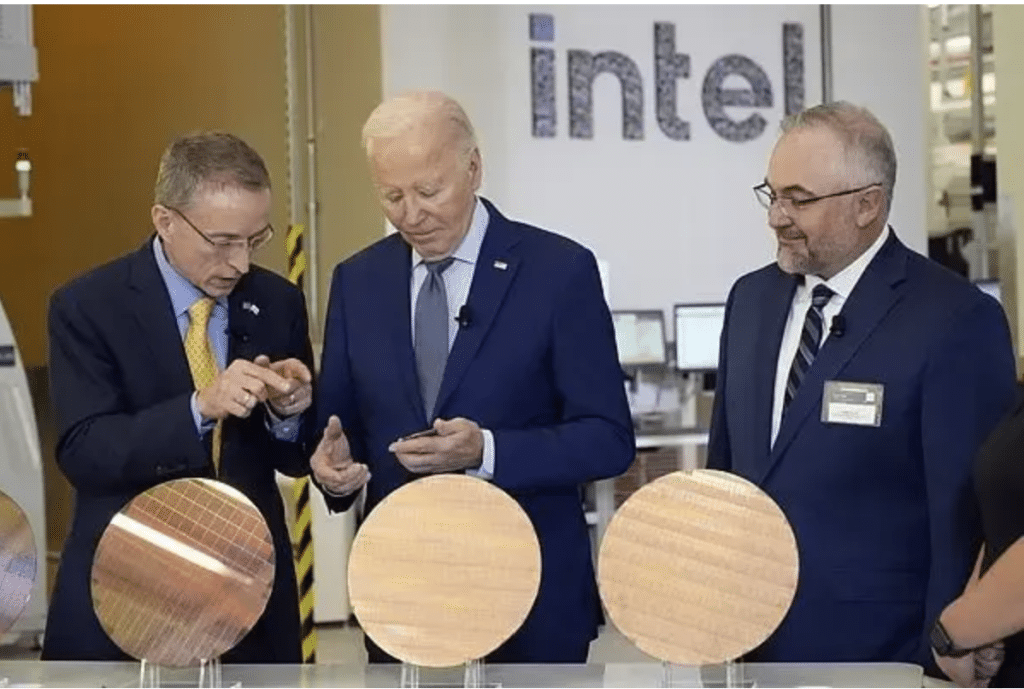
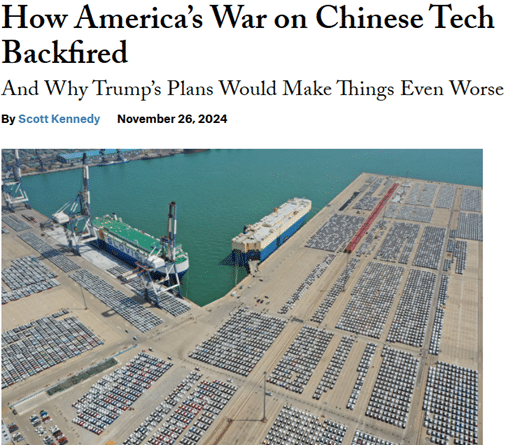

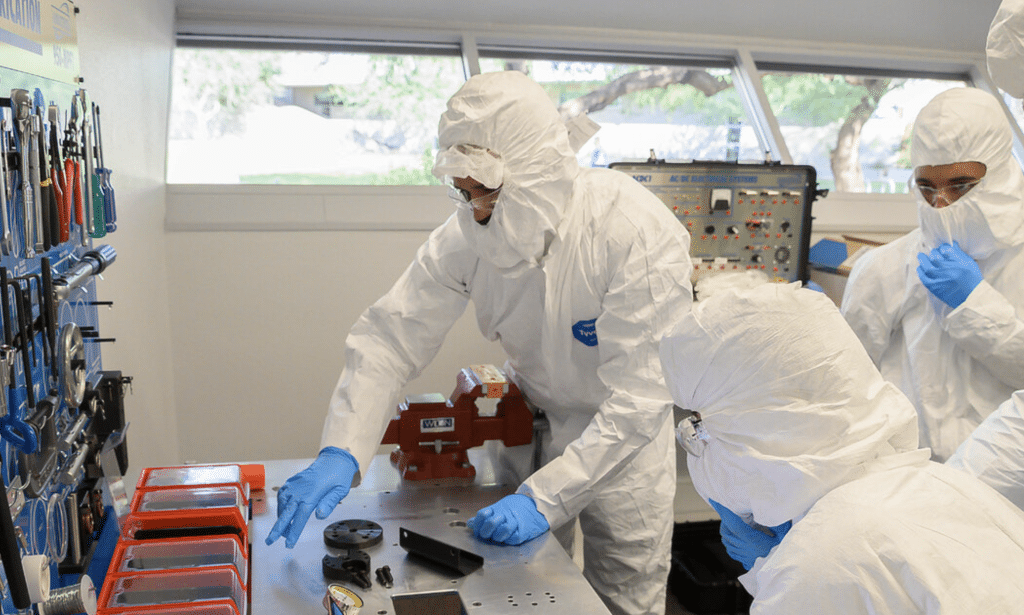
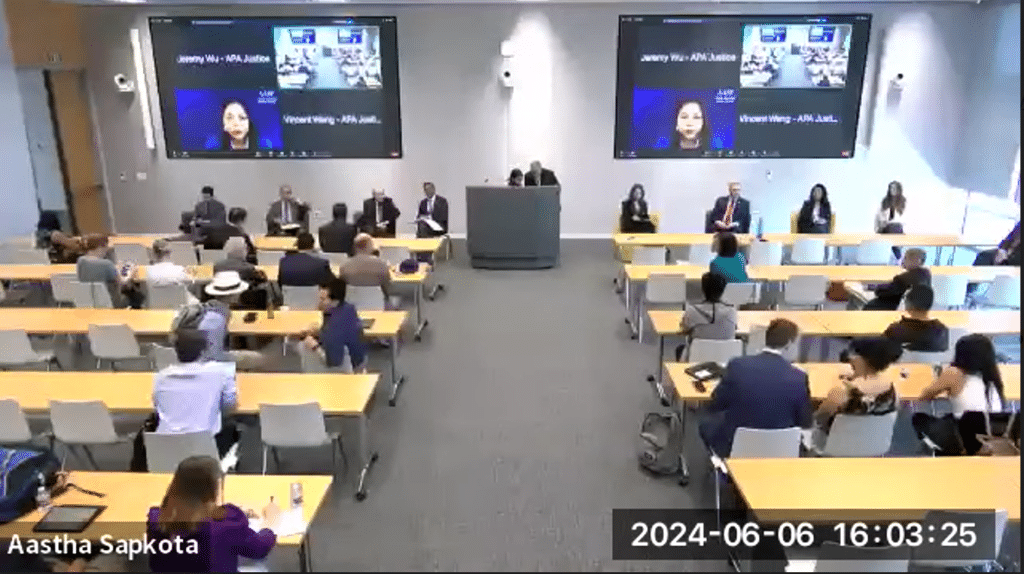

1 Comment
Like-minded 是保障合作成效的基礎,不是嗎?意識形態的差異決定分道揚颷的必然結局,妄談合作只是自欺欺人。